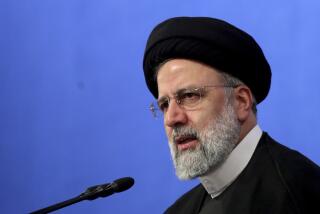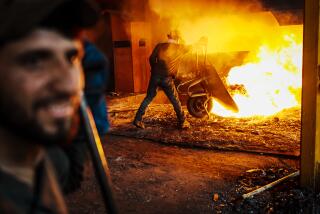Can Afghanistan tap its $1-trillion mineral wealth?
Reporting from Washington — A new Pentagon assessment released Monday says Afghanistan may hold a trillion dollars in mineral wealth, but the report ran into skepticism from miners and even other U.S. government officials.
The Defense Department identified $908 billion in mineral reserves in Afghanistan, including iron, copper, cobalt and gold. It said the reserves may include up to $223 billion in oil and gas as well as lithium, used in rechargeable batteries and other consumer products.
The study was intended to identify ways to reduce Afghanistan’s dependence on donor nations, which now fund nearly all security operations and key government functions.
But mining industry officials and others were skeptical that massive amounts of mineral wealth could be easily extracted from the country’s rugged mountains and remote regions.
“Sudan will host the Winter Olympics before these guys get a trillion dollars out of the ground,” said Luke Popovich of the National Mining Assn., which represents U.S. mining companies.
Few experts dispute that Afghanistan has immense mineral resources. But the Pentagon study, first reported by the New York Times, estimates larger reserves than previously suggested. Experts said it would probably be years before the minerals could be profitably extracted because of the lack of infrastructure, mining know-how, security and a climate conducive to business.
The Afghan government is plagued by corruption, particularly involving officials who have dealt with mineral concessions. Many of the areas of mineral deposits are in the south and east, centers of the insurgency, where there has been little development of any kind.
Nevertheless, with the United States on the hook for an estimated $7.5 billion in annual support costs for the Afghan security forces, the Pentagon has been canvassing for other funding sources for the Afghanistan government.
Ronald Neumann, a former U.S. ambassador to Afghanistan, said the mineral wealth was important in the long run but unlikely to make a difference in the war effort.
“Yes, it can make a huge difference in the economic viability of the country, but not quickly,” he said. “Does it solve your problem of funding the Afghan army next year? No.”
Pentagon officials Monday downplayed the idea that the U.S. was trying to find ways to pay for the war, and it emphasized that the study was simply intended to help the Afghan government as part of the overall counterinsurgency strategy.
“It is potentially good news, especially for Afghanistan,” said Marine Col. David Lapan, a Pentagon spokesman.
Some experts cautioned the U.S. to avoid giving the impression that it has designs on the country’s mineral wealth.
“That would play right into the extremist narrative that the West is out to subjugate Muslims and plunder their resources,” said Paul Pillar, a veteran CIA official now at Georgetown University.
Critics of the Afghan war saw the release of the assessment as an attempt to counter recent U.S. setbacks in Afghanistan with positive news.
“Maybe this is somebody’s idea of a ‘Top Kill’ maneuver that they think can stop this gusher of bad news,” said Tom Andrews, national director of the Win Without War Coalition, referring to one of the unsuccessful attempts to plug the Gulf of Mexico oil leak.
The skepticism was not just confined to the antiwar left. Philip Crowley, the chief State Department spokesman, also acknowledged that mining efforts in Afghanistan faced “numerous, though not insurmountable, problems.”
“This is an uphill climb for Afghanistan,” he said.
Times staff writer Laura King in Kabul contributed to this report.
More to Read
Sign up for Essential California
The most important California stories and recommendations in your inbox every morning.
You may occasionally receive promotional content from the Los Angeles Times.











